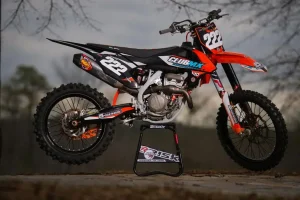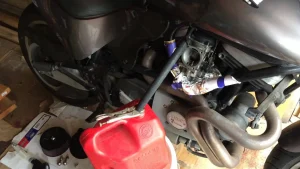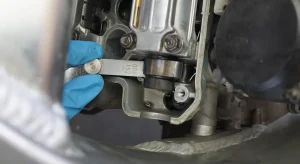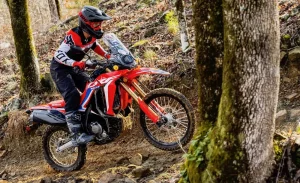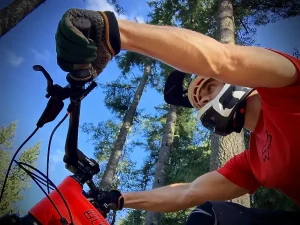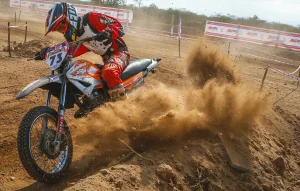Experiencing an arm pump motocross while riding can be frustrating and even painful. But fear not, there are ways to prevent it and keep your rides enjoyable. First, ensure your bike’s handlebars are set at a comfortable height and position. Next, maintain a relaxed grip, using your legs and core for stability. Regularly practice strength and endurance exercises for your arms and wrists. Hydration is key to muscle function, so drink plenty of water before and during your ride.
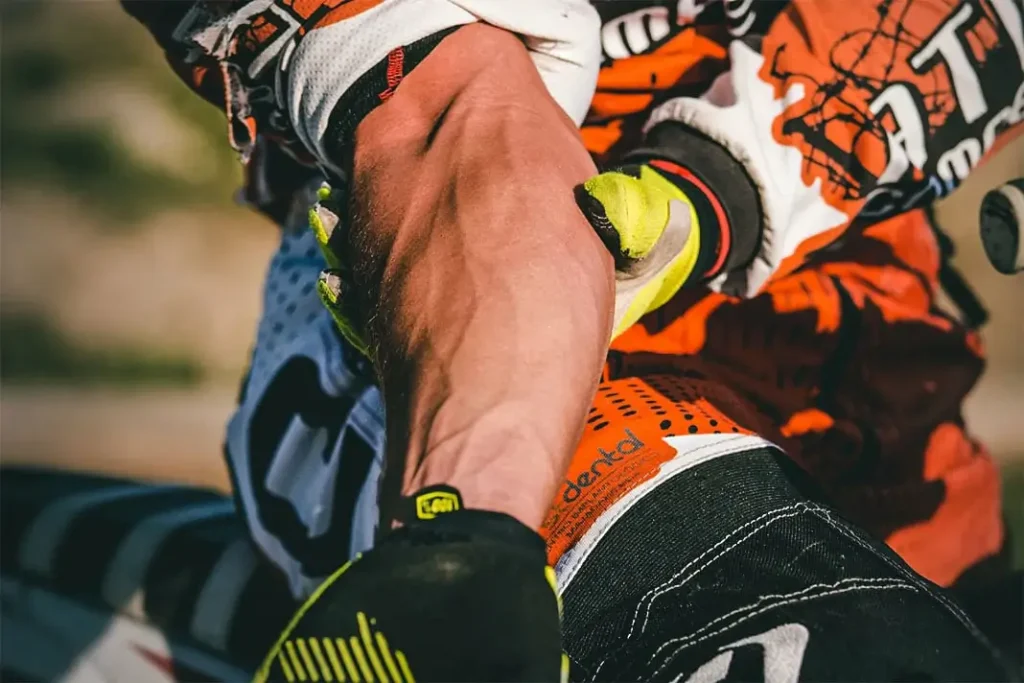
Understanding Arm Pump Motocross
Arm pump, often referred to as chronic exertional compartment syndrome (CECS), is a condition specific to activities that involve repetitive, forceful gripping and contraction of the forearm muscles.
In the world of motocross, riders continuously clutch the handlebars with a significant amount of force to maintain control over their bikes. This action, though necessary, can lead to the development of arm pump over time.
Imagine it as a form of muscle cramping or discomfort that occurs due to a lack of adequate blood flow and oxygen supply to the forearm muscles during rigorous motocross riding.
The continuous clenching of the handlebars creates a situation where muscle tissue swells, pressing against the fascia (a connective tissue sheath that surrounds muscles), and restricting blood flow. This, in turn, leads to a buildup of lactic acid and toxins within the muscle compartments, causing pain and weakness.
Causes of Arm Pump Motocross
There are several contributing factors to arm pump motocross:
✦Gripping too tightly: A common mistake riders make is holding onto the handlebars too tightly. While this might seem essential for control, it can actually reduce blood flow to the forearms, making arm pump motocross more likely to occur.
✦Inadequate fitness: Good physical conditioning is crucial for motocross riders, as it helps prepare the body for the intense physical demands of the sport. Inadequate fitness, especially in the forearm muscles, can make riders more susceptible to arm pump motocross.
✦Nervousness and tension: The mental aspect of motocross is often underestimated. Anxiety, stress, and tension while racing or riding can result in increased muscle tension, which can worsen the symptoms of arm pump motocross.
Recognizing the Symptoms
Being able to identify the symptoms of arm pump motocross is essential for both prevention and timely intervention. Here are some common signs to watch out for:
- Tightness and pain in the forearms: The most common symptom is a feeling of tightness and pain in the forearm muscles.
- Reduced grip strength: An arm pump motocross can cause a noticeable reduction in grip strength, making it challenging to control the handlebars effectively.
- Numbness or tingling: Some riders may experience numbness or tingling sensations in the affected arm.
- Difficulty controlling the bike: As arm pump progresses, it can significantly impact a rider’s ability to control the bike, leading to less precise steering and throttle control.
Awareness of these symptoms is the first step in addressing arm pumps effectively. In the next sections, we’ll explore how to prevent arm pumps, cope with them during a race, and discuss treatment and recovery strategies to help riders overcome this common challenge in motocross.
Preventing Arm Pump Motocross
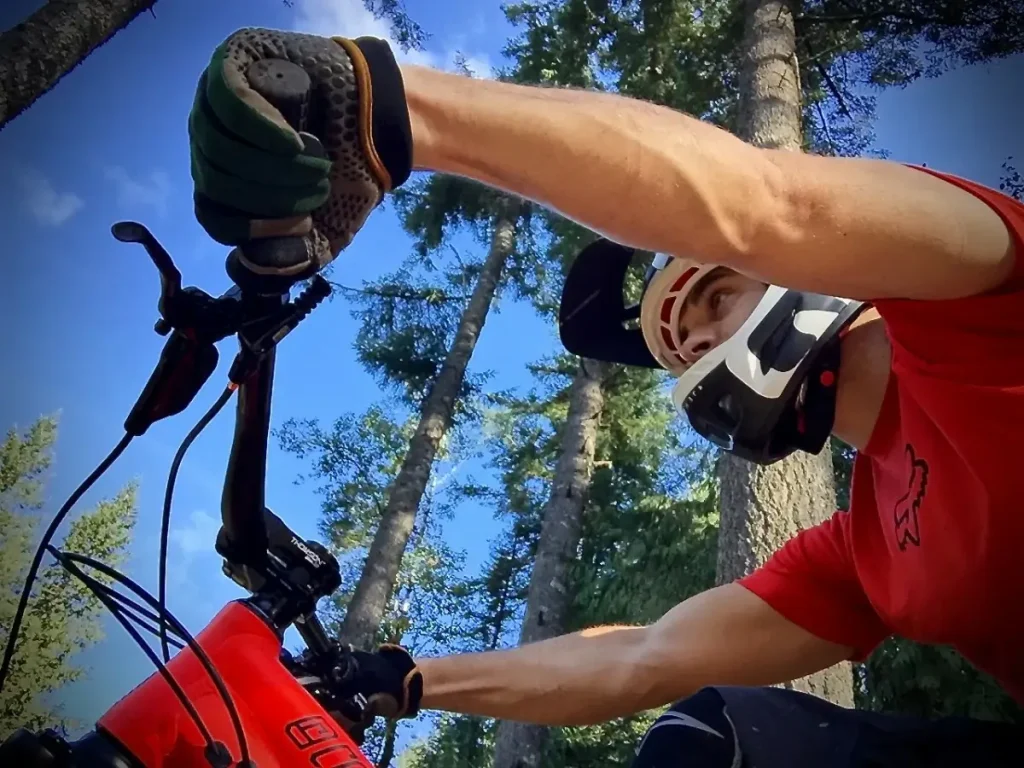
To effectively prevent and manage arm pumps in motocross, a multifaceted approach is essential. First and foremost, physical conditioning plays a critical role. Incorporating forearm-specific exercises into your training regimen is key to strengthening these muscles and enhancing their endurance. Exercises like grip strengtheners, wrist curls, and forearm stretches can be highly beneficial in reducing the risk of arm pump motocross.
Equally important is proper riding technique. Emphasize a relaxed grip on the handlebars, avoiding the common mistake of holding on too tightly. This relaxed grip not only improves control but also ensures that blood flow to the forearms isn’t restricted, mitigating the likelihood of developing an arm pump motocross.
Hydration and nutrition are often overlooked but are essential aspects of arm pump motocross prevention. Staying well-hydrated not only aids overall performance but also helps flush toxins from your muscles, contributing to a reduction in arm pump symptoms. A balanced diet is equally crucial as it supports overall muscle health.
Mental preparation cannot be underestimated. Developing strategies to cope with the stress and anxiety that can arise during races is essential. Techniques like visualization and controlled breathing can help keep nerves in check and reduce muscle tension.
Lastly, gradual progression in your motocross endeavors is advised. Avoid overexertion and gradually increase the intensity and duration of your rides and races. This allows your body to adapt to the physical demands of motocross, reducing the risk of experiencing an arm pump.
Dealing with Arm Pump Motocross During a Race
While prevention is ideal, riders may still encounter an arm pump during a race. Here are some strategies to help cope with arm pump in the heat of competition:
- Adjust Your Riding Position: Change your riding position to relieve some pressure on your forearms. Stand up on the pegs, slightly bend your elbows, and loosen your grip.
- Shake It Off: During straight sections of the track, try to shake your arms and relax your grip. This can help improve blood flow to the affected muscles.
- Mental Focus: Maintain your composure and focus on your breathing. Stress and tension can worsen the arm pump, so staying calm and collected is crucial.
- Stay Hydrated: Dehydration can exacerbate muscle cramps, including arm pumps. Make sure you’re well-hydrated throughout the race.
Treatment and Recovery
If the arm pump does strike, it’s essential to know how to alleviate the symptoms and promote a swift recovery:
✦Rest and Recovery: After a race or ride, rest your arms and allow them to recover. Gentle stretching and massage can help relieve muscle tension.
✦Ice and Compression: Apply ice to the affected area to reduce inflammation and use compression garments to support circulation and reduce swelling.
✦Medical Consultation: If the arm pump persists or becomes severe, consult a medical professional who specializes in sports injuries. They can provide treatment options such as physical therapy or even surgical intervention in extreme cases.
FAQs – Arm Pump Motocross
What causes arm pump in motocross?
Arm pump is primarily caused by gripping the handlebars too tightly, inadequate physical conditioning, and mental stress and tension during races. These factors lead to muscle swelling, restricting blood flow and causing discomfort.
How can I prevent an arm pump in motocross?
Prevention involves physical conditioning of the forearm muscles, maintaining a relaxed grip on the handlebars, staying hydrated, and developing mental strategies to reduce stress and anxiety during races.
What are the symptoms of an arm pump?
The common symptoms of arm pumps include tightness and pain in the forearm muscles, reduced grip strength, numbness or tingling sensations, and difficulty controlling the bike.
How can I cope with an arm pump during a race?
To cope with an arm pump during a race, adjust your riding position to relieve pressure on the forearms, shake your arms during straight sections, stay mentally focused, and maintain hydration.
What is the treatment for severe arm pumps?
In severe cases, the arm pump may require medical treatment, such as physical therapy or surgery. Consult a medical professional who specializes in sports injuries for guidance.
Can the arm pump be permanently cured?
There is no guaranteed permanent cure for an arm pump, riders can effectively manage and reduce its occurrence through a combination of prevention strategies, coping techniques, and proper rest and recovery.
Are there any specific exercises to prevent arm pumps?
Yes, forearm-specific exercises, including grip strengtheners, wrist curls, and forearm stretches, can help strengthen these muscles and improve endurance, reducing the likelihood of arm pumping.
Is arm pump a common issue in motocross?
Yes, arm pump is a common issue for motocross riders, and it can affect riders of all levels, from beginners to professionals. Its frequency varies depending on riding style, experience, and physical fitness.
Is the arm pump exclusive to motocross?
An arm pump is commonly associated with motocross due to the intense gripping of handlebars, it can occur in other activities that involve repetitive, forceful gripping and muscle contractions, such as mountain biking and weightlifting.
Conclusion
In conclusion, arm pump is a common challenge for motocross riders, but with the right knowledge and strategies, it can be effectively managed and, in some cases, prevented. By understanding its causes, recognizing the symptoms, and implementing preventive measures, riders can enjoy a more comfortable and successful motocross experience.
Remember that each rider is unique, and what works best for you may require some experimentation and adaptation to your specific needs and riding style.


